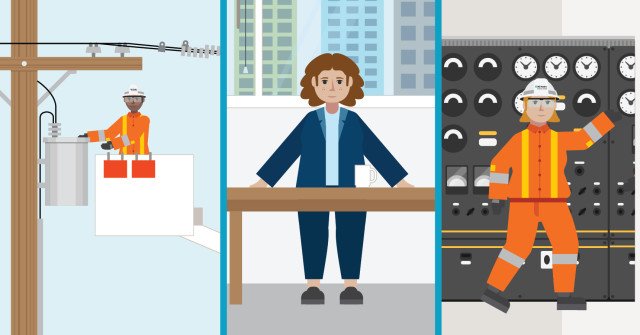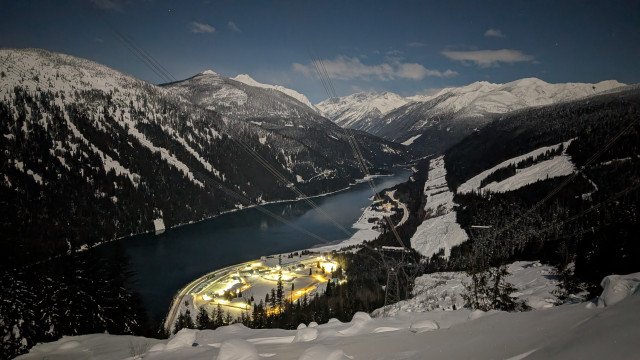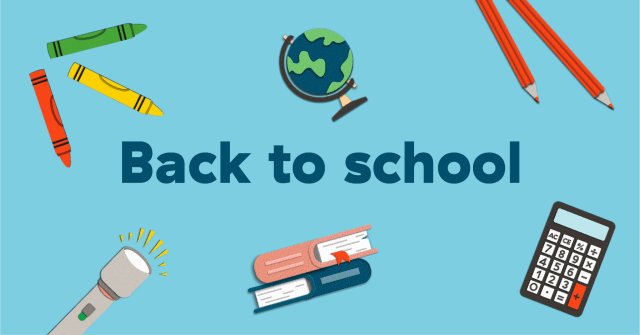B.C. is going electric
When BC Hydro released its Electrification Plan in the fall of 2021, it came with an array of incentives aimed at helping B.C. homes and businesses power more things with electricity and fewer things with fossil fuels. It's all about helping B.C. meet its climate action goals for the reduction of greenhouse gas emissions.
But what exactly is electrification? And what does this mean to the near and long-term future of students in B.C.?
To start with, we get a bigger bang for our buck in switching more of our transportation, home heating and industrial processes to electric power in B.C. We're fortunate to already be a leader in clean energy, and our 98% clean power – thanks to hydroelectric generation – means we gain a whole lot more when we use electricity to power our lives and economy.
We're using this so-called "fuel-switching" to help deliver on B.C.'s commitment to reduce greenhouse gas emissions by 16% below 2007 levels by 2025, 40% by 2030, 60% by 2040 and 80% by 2050. But we'll only get there by doing things a bit differently than we're used to.
That means using more electric school buses, expanding the use of rapid transit lines such as SkyTrain, and making it easier to get around our cities by bike, e-bike, scooter, and bus.
It's about replacing gas furnaces in our homes with electric heat pumps, and convincing family members that cooking dinner on an electric stove rather than a gas cook-top is the choice we need to make. And how do we best clean our patios, all mossy green after winter? With an electric power washer instead of one powered by gas.
There's so much work to do. Did you know that only four in 10 B.C. homes are heated by electricity? Or that, despite rapid transit and bike lanes, more than 70% of trips in Metro Vancouver are still by car?
To help make change happen, BC Hydro is working with the Government of B.C. to use both education, and money-saving incentives, to reduce our reliance on fossil fuels.
What will an 'electrified' B.C. look like, 5, 10 and 15 years from now?
If everything goes according to plan, our cities and towns – and even our mines, ships, and planes – could look (and sound) a whole lot different a decade or two down the road.
Imagine a future where our cities and neighbourhoods are quieter, where electric cars and motorcycles help replace the roar of gas-powered engines, and where more of us use bikes or e-bikes to get around. And someone flying from Vancouver to Victoria via float plane for an important business meeting may discover that the plane they're on is battery-powered.
Life at home will look and smell different, too. That burst of gas smell you used to get when starting the gas range will be gone. Your heat and hot water will increasingly come from air-source heat pumps and other electric forms of heating. And your students may find it easier to study for that math test when the worker with the leaf blower outside your window is using a rechargeable device rather than a grating gas motor that's also spewing gas fumes.
That comfy ergonomic office chair you just ordered from an online retailer? It just arrived in what was a noiseless electric truck. And your margarita pizza got here via driverless pizza delivery vehicle.
There's also a chance your home may house a battery for backup power for when the latest big storm – possibly more intense than ever as climate change increases the frequency of extreme weather – knocks the power out in your neighbourhood. Or maybe you'll just plug into your car until the lights come back on.
"I can see a time when you have solar power go into your car, and then from the car to house," says BC Hydro's Bill Clendinning, Director of Energy Planning and Analytics for BC Hydro. "That for me is the next gadget heaven in my own home, and it's something that also provides reliable power back and forth in the electrical grid."
Hydroelectric power will remain the go-to source of electricity in B.C., but will be increasingly supplemented by the likes of solar and wind power. Pivotal to solar and wind becoming more reliable will be new battery storage options that can reserve that energy for when we need it, rather than for when the sun is shining and the wind blowing.
How we're 'electrifying' our lives and the economy
It's no longer unusual to see an electric vehicle in B.C., but the Government of B.C.'s goals are for new car sales in B.C. to be 90% zero emission by 2030, and 100% zero emission by 2035. In less than a decade, you can expect to see EV charging stations everywhere, but you may need to go out of your way to find a gas station.
For decades, the best-selling vehicle in North America has been the a pick-up truck. But you can now buy an electric version of that pickup and plug it into your home charger each night. And you can plug your power tools into the pickup while doing work at the cabin.
You'll still hear traffic, as the sound of rubber tires on pavement is a major part of the racket cars make, but even that noise should diminish as cars run slower. City driving will be slower (and safer) as city planners favour more bike and bus lanes – and pedestrian-only areas – to two-lane roads that allow for faster driving.
Electrified transportation is just one part of B.C.'s concerted move to "decarbonize" the things we do.
- Fuel-switching rebates offer savings on heat pumps that don't just keep our homes warm, but also keep us cool as our summers heat up.
- Gas stoves are being replaced by induction stove tops that also improve the quality of air in the home.
- And at a copper mine near Princeton, trucks the size of houses are towed up a hill via an electric trolley, just like electric buses in our cities.
BC Hydro's five-year Electrification Plan – a clean future powered by water – includes nearly $190 million in investments to promote fuel switching in homes and buildings, vehicles and industry. It also includes more than $50 million to attract new industries to B.C. that are looking for clean power to run their businesses and reduce their carbon footprint.
“From heat waves to wildfires, we are already seeing the devastating effects of climate change," said BC Premier John Horgan in announcing the Electrification Plan last September.
“Working together with BC Hydro, we will help more people and businesses become less reliant on fossil fuels and use more affordable, made-in-B.C. hydroelectricity." - B.C. Premier John Horgan
With so much electrification, how will BC Hydro meet the demand?
Clendinning says he hears no shortage of critics, including some academics at our universities, who claim that if B.C. delivers on its clean energy goals there simply won't be enough electricity to meet the province's growing needs.
"They'll say 'you'll need 57 Site C (hydroelectric power stations) to make this happen'," he says, referring to the Site C dam and generating station on the Peace River, due for completion in 2025.
"My response is that the great thing about electrification is just how much more efficient it is. A gas car, for example, is 35% efficient while an electric car is 98% efficient. We don't need as much power as people think, and it's easier to achieve our goals than you might imagine."
Clendinning says BC Hydro's Clean Power 2040 resource planning process, which collected public and expert feedback on electricity planning for the next 20 years, has produced a plan that will allow those electrification measures to flourish. It's a combination of energy efficiency measures including new efficiency standards for buildings, and other measures such as new rate options that will help shift energy use away from peak times of demand – overnight charging of electric vehicles included – to ensure the system keeps up with the demand.
Educational resources for exploring electrification
We offer a variety of Power Smart for Schools activities to help students understand what electrification is and how it will shape our future. Teachers can also use this helpful video that quickly describes the Electrification Plan, this video that describes what electrification is, and students can explore electric vehicles in B.C., from which cars are available to why you should own an EV?
Our green future (Grades 4-6)
Students are led through visioning what a greener future might look like, and then take part researching and designing products and technologies for a sustainable future.
Shifting our transportation mindset (Grades 6-8)
Students learn about various transportation options like electric vehicles, and their impact on the world.
Inside an EV (Grades 6-8)
Students sort the car parts you need and watch a video to learn how an electric car works.
Energy technologies (Grade 7)
Students earn how innovation and technologies related to energy can reduce greenhouse gas emissions and the impact on climate change.
Innovation in transportation (Grade 7)
After watching a slideshow about transportation technologies that reduce greenhouse gas emissions, students use a worksheet to explore questions about the future of transportation.
Climate action (Grade 7)
Students map routes to school using greener transportation options, and reflect on the environmental impact of our transportation choices.
Climate change policies (Grades 10-12)
After watching a video explaining how government policies help protect the environment and fight climate change, students answer questions together as a class.
Choose an EV (Grades 10-12)
Students Learn about your EV options, decide how to collect information, analyze data and select your favorite vehicle.





